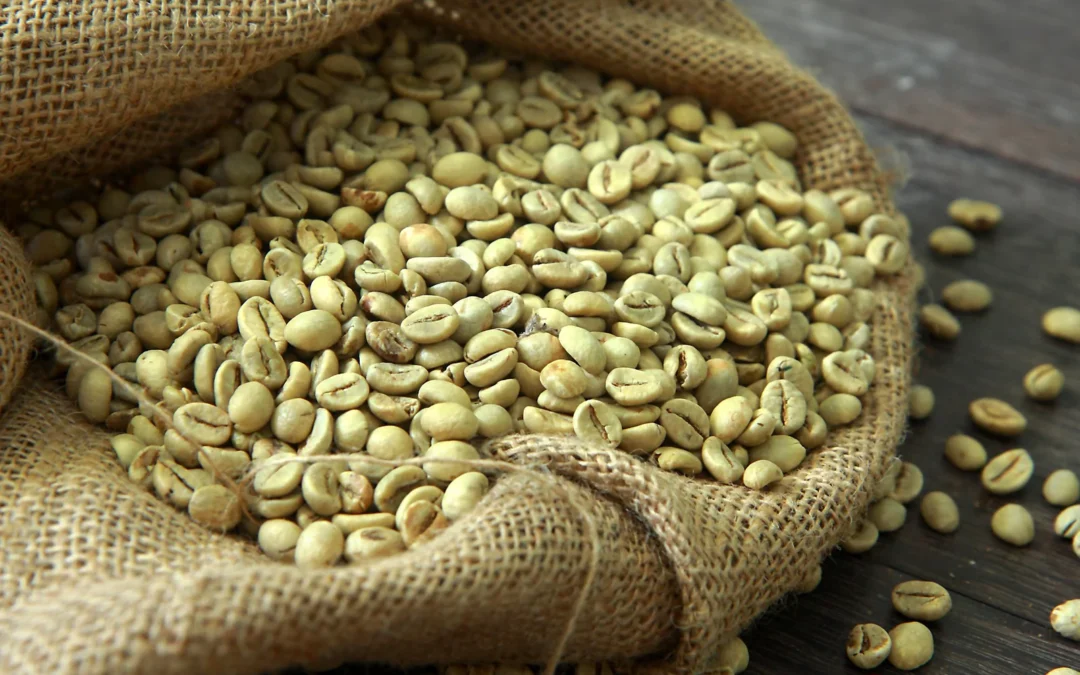Uncover the 5 best Indonesian coffee regions and explore how their unique green bean profiles shape global specialty coffee.
Indonesia’s premier coffee-growing regions and their unique green bean profiles have defined the nation’s place in the world of specialty coffee. From volcanic soils to traditional farming methods, each island produces beans with a distinct taste and story. This guide explores five iconic regions—Sumatra, Java, Sulawesi, Bali, and Papua—and explains how their beans continue to shape global coffee culture.
Sumatra: The Earthy Depth of Indonesian Coffee
Sumatra is Indonesia’s most recognized coffee origin, producing green beans with a heavy body, low acidity, and earthy complexity. Grown in areas such as Mandheling, Lintong, and the Gayo Highlands, Sumatra coffee is shaped by volcanic soil, high elevation (1,000–1,500 meters), and heavy rainfall.
What truly sets Sumatra apart is its wet-hulling process (giling basah), a traditional post-harvest method where parchment is removed while beans still hold significant moisture. This process, unique to Indonesia, gives Sumatra beans their rustic, bold flavor profile with notes of chocolate, tobacco, and herbs. According to Wikipedia’s entry on Indonesian coffee, this technique is one of the key factors behind Sumatra’s global reputation.
Mandheling beans are the most famous, prized for their deep, syrupy mouthfeel. Lintong coffee offers slightly brighter acidity with complex herbal tones, while Gayo beans are known for organic cultivation and fair-trade certifications.
For espresso, Sumatra is indispensable, delivering the earthy base for countless blends. Specialty roasters worldwide rely on its consistency and intensity, making it a cornerstone of Indonesian exports.
Java: The Historic Birthplace of Indonesian Coffee
Java holds historical significance as the first island where Dutch colonists cultivated coffee in the 17th century. Its legacy gave rise to the word “java” as a synonym for coffee worldwide. Today, Java’s premier growing region is the Ijen Plateau, where Arabica thrives at 900–1,600 meters in volcanic soil.
Java beans differ from Sumatra’s—offering medium body, moderate acidity, and clean flavors with hints of nuttiness and spice. Unlike the smallholder model of Sumatra, Java maintains large estates (kebun besar), some still dating back to Dutch colonial times. These plantations ensure consistent quality and traceability.
Historically, Java was central to the famous Mocha-Java blend, one of the oldest coffee combinations in the world, mixing Yemeni Mocha with Javanese beans. The result was a balanced cup, highlighting both fruitiness and depth.
Today, Java coffee is popular among specialty roasters who value its smooth, balanced profile. Its adaptability makes it suitable for both espresso and pour-over methods. As Indonesia modernizes its coffee industry, Java continues to link tradition with innovation, preserving its role as a cultural and agricultural icon.
Sulawesi Bold Flavors from Toraja Highlands
Sulawesi, formerly known as Celebes, is home to Toraja, a region producing coffee with bold character and striking complexity. The Toraja Highlands, at elevations between 1,100 and 1,800 meters, provide ideal conditions with volcanic soil and cooler temperatures.
Toraja coffee is famous for its heavy body, vibrant acidity, and layered flavors. Typical tasting notes include dark chocolate, ripe fruit, and subtle herbal undertones. Compared to Sumatra, it is cleaner and brighter, yet still carries Indonesia’s signature earthy depth.
The processing method is often wet-hulling, similar to Sumatra, but farmers are increasingly adopting fully washed techniques. This brings out fruitier, more aromatic notes, appealing to the global specialty market.
Sulawesi coffee is deeply tied to local culture. Farming remains in the hands of smallholder communities, many of whom use traditional practices passed down for generations. Despite challenges in infrastructure, Toraja beans consistently fetch premium prices due to their unique profile.
According to Coffee production in Indonesia (Wikipedia), Toraja is one of the country’s most prized Arabica origins, often sold as single-origin coffee in specialty cafés worldwide.
Bali Balinese Coffee Culture and Kintamani Highlands
Beyond beaches and temples, Bali is also home to exceptional coffee, primarily from the Kintamani Highlands. Situated at 1,000–1,700 meters around Mount Batur, Kintamani benefits from fertile volcanic soil and a subtropical climate.
Bali’s coffee profile is distinct—bright, citrusy, with floral notes and medium body. This is largely due to intercropping, where coffee is grown alongside citrus trees, subtly infusing the beans with fruity undertones. Unlike Sumatra or Sulawesi, Bali farmers frequently use the washed method, producing cleaner, more vibrant cups.
Balinese coffee production is cooperative-driven, with many farmers adopting organic practices certified for international markets. Sustainability and fair-trade initiatives are integral here, aligning with global specialty coffee trends.
Bali also has a strong coffee tourism culture. Visitors can tour plantations, participate in cupping sessions, and experience both traditional Balinese brewing and modern specialty techniques. Kintamani coffee represents a refreshing side of Indonesian coffee—bright, sustainable, and globally appealing.
Papua Unique Beans from Indonesia’s Eastern Frontier
Papua, Indonesia’s easternmost region, shares geographical traits with Papua New Guinea, another top coffee producer. Arabica grows in remote highlands such as Wamena and Baliem Valley at 1,400–1,800 meters.
Papua coffee is known for its smooth body, balanced acidity, and unique flavor notes of cocoa, tropical fruit, and floral undertones. Unlike Sumatra’s earthiness, Papua delivers a clean, delicate cup.
Challenges include limited infrastructure, remote locations, and small-scale farming. Most cultivation is handled by indigenous communities using traditional methods. Yet, this remoteness ensures beans grow in pristine, unpolluted environments.
Though production volumes are lower, Papua coffee is increasingly recognized in specialty markets for its rarity and quality. According to Wamena, these beans stand out as some of the most distinctive in Indonesia, offering diversity beyond the archipelago’s classic earthy styles.
Papua represents the frontier of Indonesian coffee, adding nuance and sophistication to the nation’s green bean portfolio.
In conclusion, Indonesia’s premier coffee-producing regions and their unique green coffee bean profiles—from the strength of Sumatra’s soil to the brightness of grapefruit—demonstrate the nation’s unparalleled diversity. Each island contributes to a global heritage shaped by history, geography, and tradition. Together, they cement Indonesia’s role as one of the world’s most important coffee producers, offering something for every palate and every brewing style.

